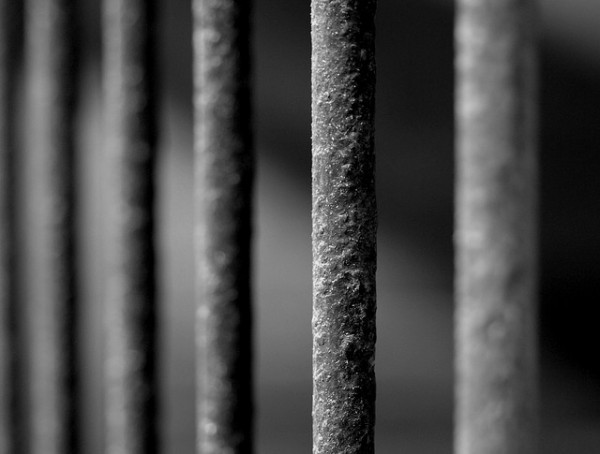

State prison reforms are supposed to reduce dangerously overcrowded prison populations and help to alleviate the state’s fiscal crisis. But now county trial judges in San Mateo County say they feel the squeeze of the reforms, which are happening in tandem with budget cuts to courts.
As San Mateo County courts face unprecedented state budget cuts, they are also experiencing a higher caseload because of prison reforms and a jail that is at more than 130 percent of its capacity. San Mateo Presiding Judge Robert Foiles said if something doesn’t change soon, citizens face significantly reduced access to justice.
Over the past five years, trial courts throughout the state have had their budgets slashed by about $1 billion because of the state’s fiscal crisis. Before the cuts San Mateo County had $12 million in reserve. They are now down to $1.2 million. The governor’s proposed budget for this year would mean another $4.5 million budget shortfall.
“We’re having difficulty servicing the public as it stands,” Foiles said.
The court has cut more than 30 percent of its workforce. If the Governor’s proposed budget passes, they will have to shutter the central courthouse and reduce the South San Francisco courthouse to two judges – who will only hear the most serious cases.
“People needing restraining orders have to come to Redwood City,” Foiles said. “If they don’t drive, it’s a pretty long bus ride.”
San Mateo is a microcosm of what is happening throughout the state, Foiles said. In a recent survey of trial courts for the Judicial Council, 11 of the 48 counties that responded reported they weren’t able to process domestic violence temporary restraining orders on the same day they’re filed.
Also, state prison reforms will advance in July, so that people who violate their parole will come before the county courts. Now, they face the state parole board.
The state reforms are a result of AB 109, also known as realignment. In an effort to reduce the state prison population, legislators said counties could no longer send low-level offenders to state prison. Instead they must send them to county jails.
Realignment is proving an impossible task in his courtroom, San Mateo Superior Court Judge John Grandsaert said.
Before reforms, parole violators faced up to a year in prison for a violation, though the often served far less, between 75 and 100 days. Realignment means judges can only sentence them up to 6 months. Under current credit rules, this means they serve 90 days.
“Ninety days is just not a lot of time to serve, especially in the county jail,” Grandsaert said.
At professional events, Grandsaert said, judges are complaining that their sentences mean nothing.
People he used to sentence to three or four years in a state facility are only serving 10 percent of their time. “There’s no way county jail can support those kind of sentences,” Grandsaert said.
The San Mateo County Jail is meant for a one-year maximum sentence. It is currently operating at 130 to 140 percent capacity. It has yet to reach dangerous over-capacity levels because judges are doing all they can to keep people out of the state facility.
But San Mateo County is building a new jail with more than 500 new beds and space for rehabilitation programming to replace the current county jail.
The state reforms created a new tool to keep jail populations to capacity —the split sentence. With a split sentence, Judge Grandsaert can separate a sentence between a period of jail time and a period of probation supervision. For example, someone sentenced to four years would serve the first year in county jail and the rest under supervision.
“The beauty of that is they’re not in for very long initially, but they are subject to re-incarceration for violations,” Grandsaert said.
After 30 days served, a year in jail can also be converted to a residential treatment program under split sentencing.
Grandsaert now uses split sentencing in practically every case. San Mateo is third in the state for split-sentencing frequency.
Grandsaret, who also runs the Veteran’s Treatment Court, said before realignment, the county was making efforts to focus on more rehabilitation and deferment programs. He said being forced by the state to reform because of fiscal circumstances may have a negative impact.
“I think it does affect community safety,” Grandsaert said. “One of these guys who gets out who shouldn’t is going to commit a horrendous crime.”
The state provided a little less than $5 million to San Mateo County to help with realignment but most of that goes towards in-custody and out-of-custody supervision. The San Mateo courts got some money for hearing judges.
“It’s relatively small,” Foiles said. “It’s not going to cover our shortfall.”
They are hoping the state will allocate more to the courts in the new budget, but Foiles said he isn’t holding his breath.






You must be logged in to post a comment.